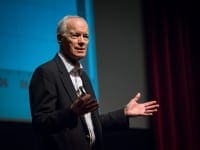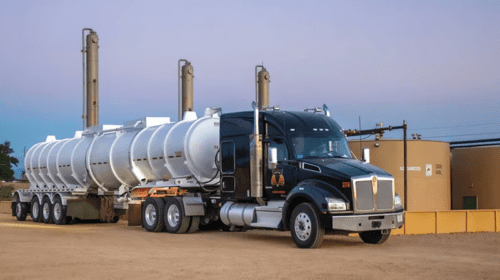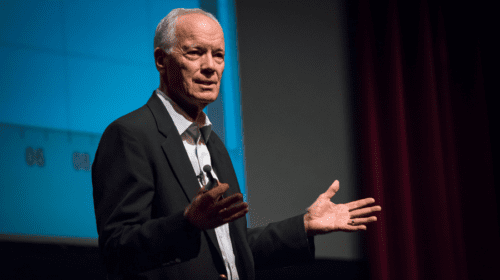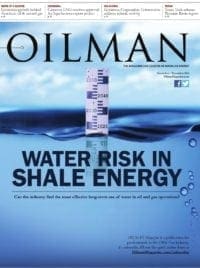One of the more exciting stories being extracted from the modern day shale play is natural gas. Although it does not compare to crude volumetrically, the natural gas plays are creating a culture of innovation that will completely transform how people live their daily lives. Many energy experts and professionals believe this “natural” shift is happening across the planet and will continue over the next decade as infrastructure is built.
“The shale plays have been a paradigm shift in our industry; we always knew there was gas in the shale, but we couldn’t economically get that gas out,” Ron Jibson, past chairman of American Gas Association said. “Now, with the technologies of horizontal drilling and the continued ability to use fracking, which isn’t new as we’ve been fracking for 25 years, we are able to get the gas out of the shales very economically. As a result of that you have an abundance of natural gas that we’ve never had before.”
Jibson continued by contextualizing the milestones and magnitude of this modern day shale play.
“Dating back to the 1970s with President Carter, when he said the country would be out of gas in the next eight to 10 years, he was right,” Jibson said. “We had an issue at the time, but as always, ingenuity and smart people found ways to change that and find new ways to develop the natural resources and do it very effectively and prudently.”
Jibson’s claim of abundance is undeniable, as the U.S. recently became the world leader in natural gas production by reaching an all-time high of 328 billion cubic feet per day, according to the BP 2014 statistical world energy review.
Additionally, U.S. natural gas production has grown over 20% in the past five years, and the world’s use of natural gas is about 24% of all primary energy consumed. Oil is approximately 33% and coal is 30%.
“We can now look at natural gas beyond just space heating and water heating,” Jibson said. “We can look at it for enhanced power generation and continue building more and more plants on natural gas. It’s a backup to all renewable energy, and at the same time, we can use it as natural gas transportation. We can do all this and even look at exporting natural gas.
Six years ago we were considered an importer, now we are looked at as an exporter of natural gas.”
Jibson believes a rapid shift in the natural gas supply will transform the natural resource’s role as an “abundant foundation fuel” rather than a “bridge fuel.”
Jibson acknowledges the reality of using all forms of energy.
“Now it probably is not a great situation to have just one fuel be a foundation fuel,” Gibson said. “So as people talk about natural gas being that foundation fuel, we believe we have the abundance for it, but we also have to be cognizant that we need a large portfolio of supply.”
U.S. Senator John Hoeven (R-ND) agrees with Jibson on the importance of a balanced energy portfolio and sees North Dakota’s long term approach to natural gas as the role model for other shale plays.
“We are producing huge amounts of natural gas, which really is a byproduct of our drilling for oil,” Hoeven said. “But the key is, we have to capture it rather than flare it and get it to market. Part of that is creating a market for that natural gas.”
Hoeven’s drive for the Bakken to become the poster child for the energy economy has some validity. North Dakota has multi-billion dollar natural gas investments from ONEOK, Hess Corp., CHS, BNSF, and Badlands. These are just the beginning of the billion dollar announcements.
“We are working with Cenex Harvest States to build a multi-billion dollar fertilizer plant,” Hoeven said. “Right now, that fertilizer has to come from India, getting shipped across the ocean, hauled to North Dakota on trains. We are at the end of the line creating costs and questions about dependability. Think about producing it here. We are just barely scratching the surface here.”
Hoeven is not alone when it comes to lobbying for a shale play’s place in the history books. Matthew D. Cabell, president of Seneca Resources Corp. and senior vice president of National Fuel Gas Co., sees the Marcellus Shale as the one to set the standard.
“The Marcellus Shale is arguably the most important natural gas accumulation ever discovered,” he said. “Along with several other shales, it completely transformed the energy landscape in this country.”
Seneca, the exploration and production subsidiary of National Fuel, produces oil in California and natural gas from the Marcellus Shale.
Loren Scott, an energy and economic expert, believes Louisiana is poised to shift into natural gas overdrive.
“If you go from New Orleans to Baton Rouge over to Lake Charles in the Southwest Corner, that’s the I-10 Corridor, and along there, you have the three things that chemical firms need,” said Scott. “You need lots of water, and you have the Mississippi, the Gulf of Mexico, and Calcasieu ship channel to Lake Charles. You need a way to move bulk product, which most of these chemical firms are doing; again barge is the cheapest ship and way to do that, and you have the river.”
In addition, Scott noted, it is necessary to have abundant natural gas, and Louisiana has that.
“Even before the recent boom, Louisiana was number two in the nation in terms of chemical production, second only to Texas,” Scot said. “Texas has those same three things that I mentioned, but now you have a huge industrial expansion of all those firms and brand new firms coming in because they are huge users of natural gas. The U.S. share of the world’s chemical market is growing because we are kicking the behinds out of the Europeans. They can’t compete with us when they have to pay $12 per million BTU for natural gas.”
Scott added that the Wolfcamp in Texas carries the biggest potential for oil companies’ reallocating resources and restructuring their strategies due to the shale play’s massive size.
“The Wolfcamp is huge,” Scott said. “You’ve heard of the Eagle Ford, but the Wolfcamp is estimated to hold 50 billion barrels of oil. The Eagle Ford is 27 billion, the Bakken is 13 billion. The Wolfcamp is second only to Ghawar Field in Saudi Arabia in terms of size. It is 3,500 to 4,500 feet thick. It is hot with oil.”
Scott is president and founder of Loren Scott & Associates. He was on the economics department faculty at Louisiana State University (LSU) from 1969 to 1998, and he is presently professor emeritus of economics at LSU and public speaker on energy issues.
The U.S. has surpassed once global leaders Russia, Qatar and Iran in production gains. The capturing of natural gas, as a by-product to the massive shale expansion, seems likely to continue its prodigious growth in the Marcellus, Barnett, Bakken and other gas-rich shale plays.
Qatar’s natural gas production is something Ken DeCubellis, CEO, BlackRidge Oil and Gas, is familiar with, giving him an edge at understanding the current state of natural gas in America.
“I used to work for Exxon Mobil, and in the early 2000s into 2006, Exxon was worried, as was the rest of the country, that we were running out of natural gas here,” DeCubellis said. “They embarked on a multi-year program investing about $30 billion in the Middle East to get access to the natural gas in Qatar, liquefy it, ship it over to the U.S., regasify it offshore, and get it into the grid,”
Now, DeCubellis notes, Exxon is trying to take natural gas produced in the U.S. and export it.
“They are going in the opposite direction,” he said. “Two drivers behind why the energy situation has flipped completely on its head in a short period of time is the advent of horizontal drilling and hydraulic fracturing, and it’s the combination of those two that has unlocked this potential.”
The one piece of the natural gas play that has many investors excited, and worried, is natural gas transportation. Jerry Moyes, founder, chairman and CEO of Phoenix-based Swift Transportation, one of the largest trucking companies in the nation, is in the initial stages of converting their trucks to LNG.
“We run about 20,000 trucks and run about seven to eight million miles a day,” Moyes said. “We’ll buy about a million gallons of diesel fuel a day. Swift will gross about $4 billion and $1 billion of that will go to diesel fuel. It’s a very big number, and it is something we are really watching.”
Moyes estimated 200 trucks would be running on natural gas by the end of the year. The company addressed issues and potential solutions in a variety of areas, including a lack of national infrastructure, energy price points, and vehicle weights.
“I told the Wall Street Journal last year I was hoping to be at 10% natural gas by the end of this year,” Moyes said. “I’m probably going to be at 1%.”
In addition to uncontrollable variables in distribution, engine technology and energy prices, Moyes said they are going through a learning process as their research and development continues with natural gas conversions for a bigger payoff down the road.
“Once we get into the next generation of trucks, we won’t be spending that much money,” he said. Moyes is also the owner of charter airline Swift Air and a limited partner in the Arizona Diamondbacks.
Looking at the nation’s other distribution backbone as an indicator for trends, Tom Petrie, president and chairman, Petrie Partners, said companies like BNSF are extremely interested in natural gas technologies because of the significant cost savings.
“We are in the early stages of the railroads testing their LNG as a product for their engines,” Petrie said. “They are under a lot of pressure because they have to run ultra low sulfur diesel. One thing we learned about ultra low sulfur diesel is it is a lot easier for Congress to pass a law, or the EPA to pass rules mandating it than it is to [convert to] it.”
Petrie said the price of diesel used to sell for about $0.75 less than regular gasoline, whereas diesel sells today for about $1.00 more. Petrie claims this is because of ultra low diesel standards.
“Natural gas is selling for about $24 an equivalent barrel, versus $104 a barrel,” Petrie said. “That’s a huge spread to work with. Now the question becomes whether the performance will be up to the standards of BNSF’s needs for their engines. They’re doing the tests on them right now.”
Petrie added that the shift to natural gas, in theory, will lower the cost of the natural resource and improve environmental practices.
According to Jibson, the current roadblocks experienced in the U.S. distribution backbone have not stopped the industry’s shift towards natural gas.
“Again, because of the abundance of natural gas, you now have what I would call the foundation market, which is your mid-sized vehicles,” Jibson said. “These would be trash hauling vehicles, busses, commuter shuttles; places where the economics are a flat out no-brainer. They are seeing tremendous savings, again the abundance of natural gas makes that possible.”
Jibson explained that the U.S. transition to natural gas trash hauling vehicles may shift quickly over the next two years, indicating 70% is “very likely.” The most current numbers in the trash hauling vehicle niche, according to Jibson, was approximately 49%.
“The mid-sized vehicles and transit busses are definitely the foundation of this shift,” Jibson said. “The large vehicles, the big semi trucks, are now what I would call the emerging market. We are seeing tremendous results from companies like Swift Trucking and Central Freightlines, major companies like Frito Lay and Dart Transportation, who have made major commitments to convert a large number of vehicles and are buying the engines currently available in a 12-liter engine.”
Jibson said costs are being reduced and major milestones and hurdles have recently been addressed.
“I think truly in the U.S., we’re seeing the needle move to a point where we are going to be very competitive in the rest of the world, and we will see this market continue to grow and develop,” he said.
Jibson offered an update on the direction of passenger vehicles, too. “Passenger vehicles are probably the market that is being pulled along right now,” Jibson said. “I think we are going to need to see home refueling at a very economic rate and technology. There are devices currently available, but we need to get the price down on home refueling units. When that happens, I think you will also see the passenger market take off.”
Jibson said the majority of the miles American’s put on their vehicles are commuter miles.
“The philosophy is that you have a vehicle that has a 150 mile range on natural gas, and people can drive to work every day,” Jibson said. “They come home and plug-in in their garage. By the next morning, they have a full tank again ready to go. If they decide to drive outside the range of a natural gas filling station on the weekend, they can run on the gasoline in the dual fuel vehicle. It’s a great philosophy and can be done right on their home unit.”
Jibson said many natural gas utility companies can supply, install, and maintain these units. The charges vary depending on region and amount of service required.
He added that it is an exciting time in the U.S., and the transportation transformation is happening.
“We are very excited to be a part of that,” Jibson said. “We are building these major facilities, literally from the West Coast to the East Coast in strategic locations in a lot of cities many people haven’t heard about, but they are major hubs for trucking companies, and we are going to see that market continue.”
Photos by Crude Life Photography/Paul Flessland
Jason Spiess is a multimedia journalist, entrepreneur and content consultant. Spiess has over 25 years of media experience in broadcasting, journalism, reporting and principal ownership in media companies. (Over 30 years experience if you count his adolescent years as a newspaper delivery boy learning the importance and logistics of daily distribution and monthly door-to-door bill collecting.) Spiess has worked in the areas of oil and gas, UAS and precision agriculture, health care, cannabis, agriculture, real estate, government affairs and economic development. Spiess is the host of two radio programs, Building the Bakken and Coffee & Capitalism, and three specialty programs, MonDak OilField Review, Corporate Ink and UnStuck, that carry a radio network that spans five states and two countries. Spiess is a North Dakota native and graduated from North Dakota State University.

















